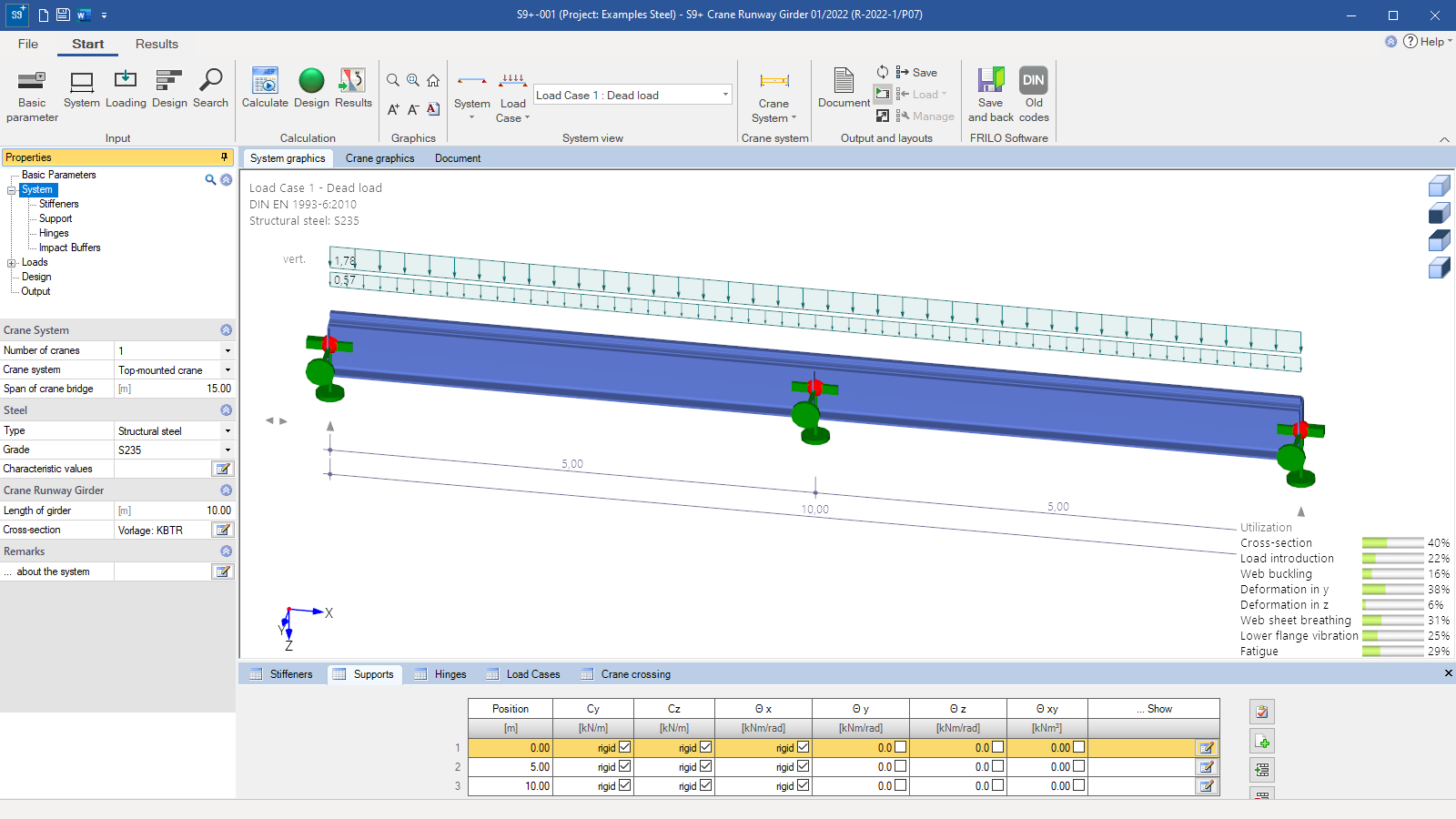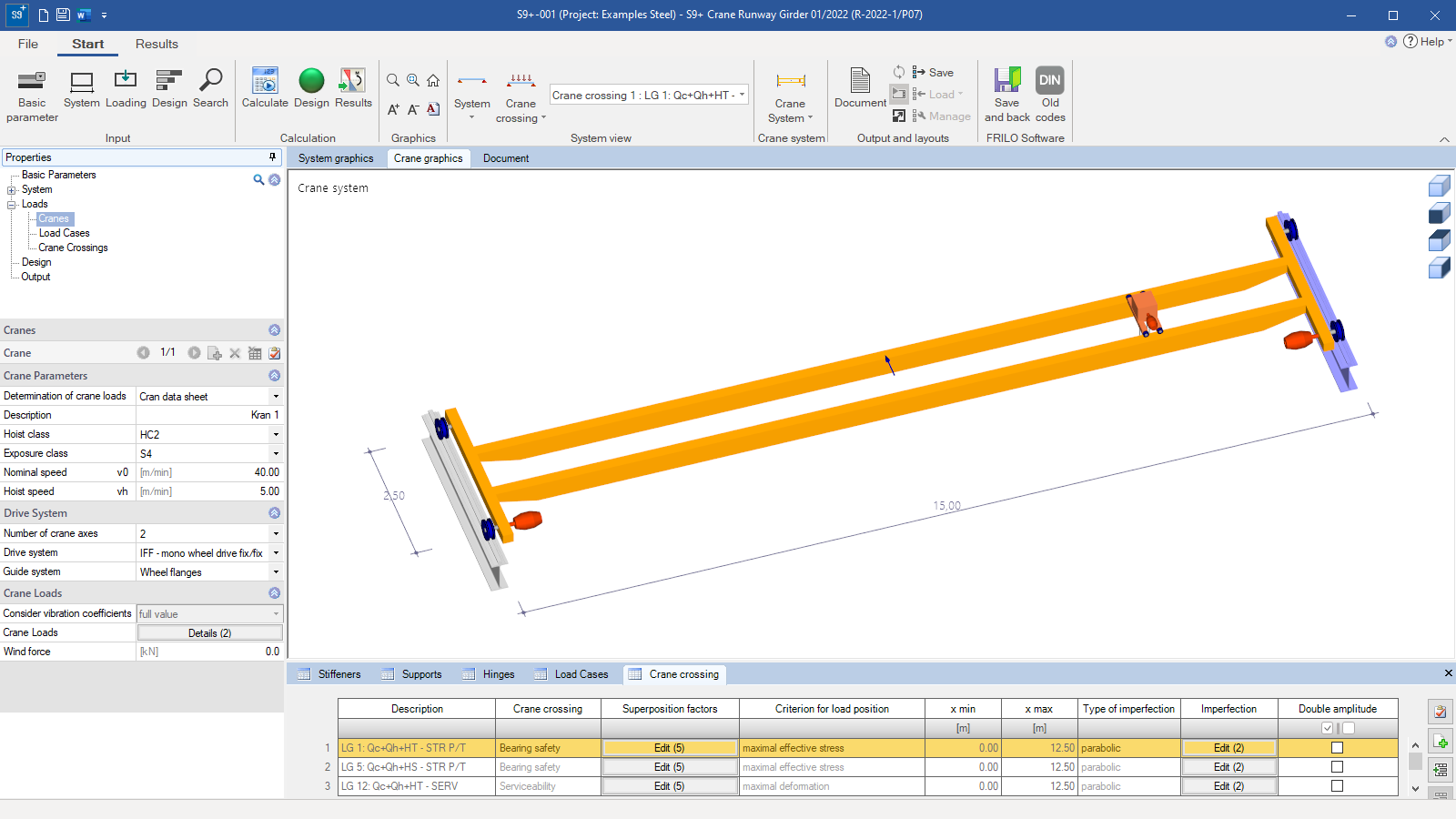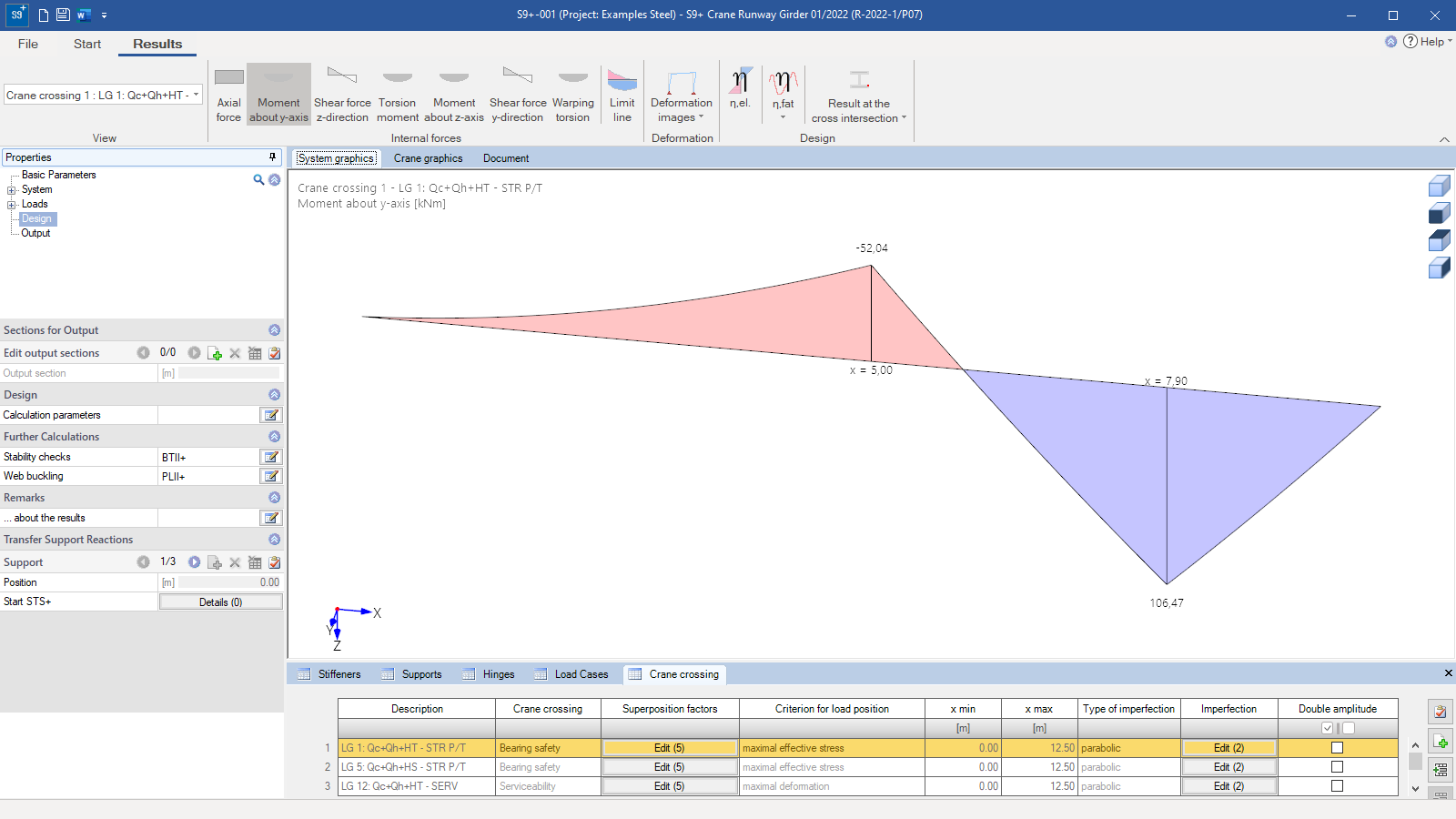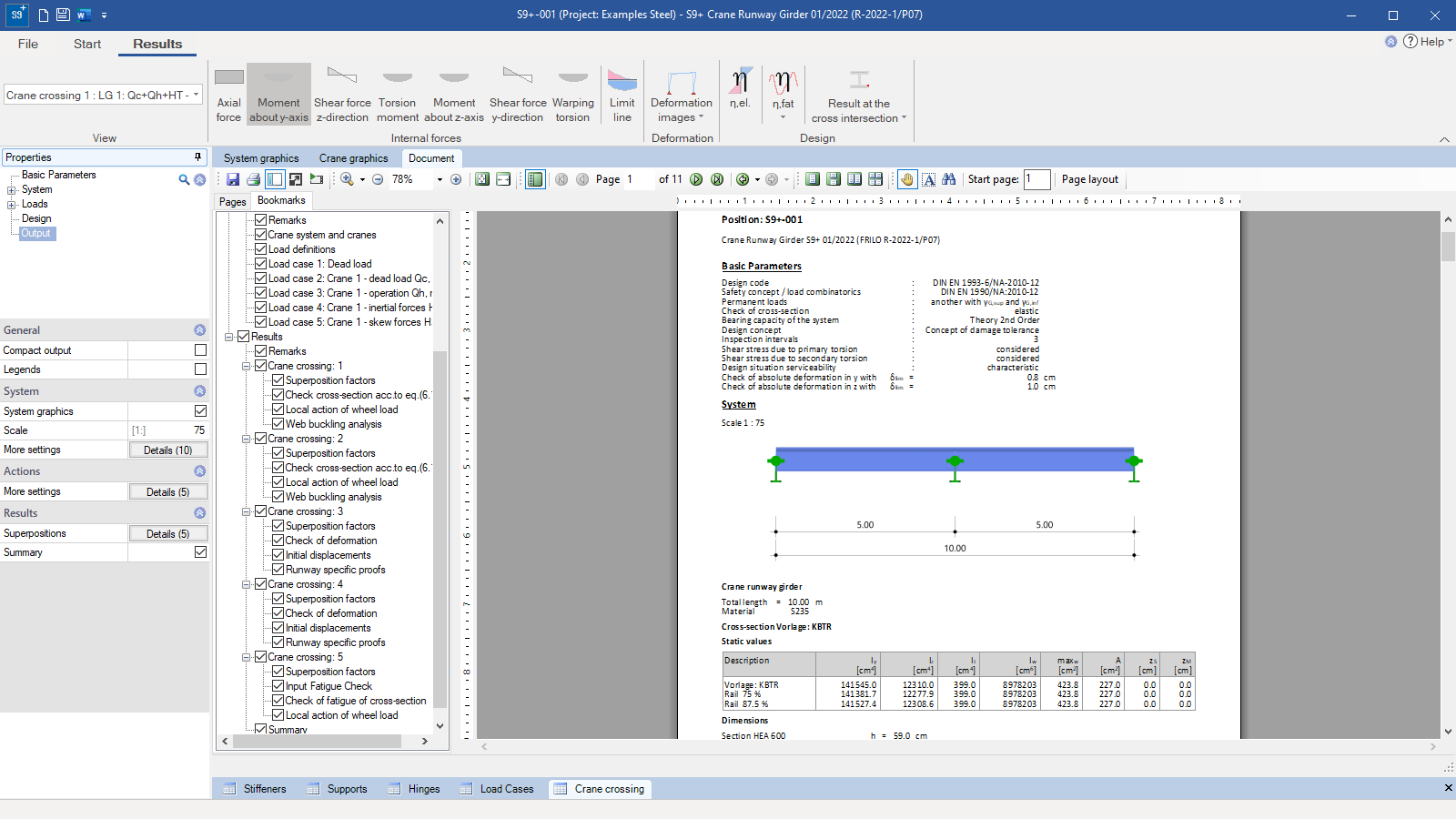
Crane Runway Girder
The “Crane Runway Girder” program is used to analyze and design crane runway girders in accordance with EN 1993-1-1 and EN 1993-6. The crane systems top-mounted gantry crane, suspension crane and monorail underslung crane are available for selection. Crane systems with two cranes maximum and up to four axes can be designed.
Only available in FRILO Ultimate
Core capabilities
Material
- Structural steel (S235, S275, S355, S450)
- Annealed steel (S275N to S460N)
- Thermo-steel (S275M to S460M)
- Weathering steel (S235W to S355W)
- High-temperature steel (S460Q to S460QL1)
- Hollow section, hot-finished (S235H to S355H)
- Hollow section, hot-finished, fine-grain (S275NH to S460NH)
- User-defined steel
Structural system
Available systems:
- Single-span or multi-span girders with or without shear-force joints or moment joints
- Arrangement of dumpers on one or both sides
- Top mounted gantry cranes, suspension cranes and monorail underslung cranes
- Maximum two cranes with up to four axes
Cross-sections:
- Rolled and user-defined I cross-sections with and w/o top flange angles
- Crane rails, A-shape or F-shape, clamped
- Flat steel rails, welded or clamped
- Arrangement of buckling stiffeners
Supports:
- Any type of support possible (horizontal, vertical, torsion and warping, each definable as rigid support or spring)
- Supports can be defined at different x-coordinates
Loads
- Automatic determination of crane loads in accordance with the standard (self-weight, vertical wheel loads and horizontal lateral loads) or load entry in accordance with the crane data sheet
- Load cases and crane crossings are determined automatically and can be edited and extended
- Wind loads and seismic loads can be considered
- Vibration coefficients and partial safety factors are considered automatically and are editable
- Hoisting classes H1 to H4
- Duty classes S0 to S9
- Automatic determination of the initial imperfection
General
The analysis is performed in a second-order bending torsion analysis. The internal forces, deformations and stresses are determined with consideration of warping torsion in a second-order analysis. The verification of the cross-section is performed at the stress level with γM=1.1, which means that no further stability verifications are necessary. The program automatically determines the most unfavourable load position for each verification.
Structural safety
The elastic cross-sectional resistance is verified with consideration of warping moments and torsional moments. Moreover, the local wheel load application on the upper or lower flange is verified depending on the selected crane system. For suspension cranes, the local load application caused by suspension at the top flange is also verified. For gantry cranes, the web buckling verification is performed.
Serviceability
Within the framework of the serviceability limit state design, the deformation limitation is verified. In addition, the verification of web breathing is performed and the vibration limitation at the lower flange is checked.
Fatigue
In the fatigue limit state, the fatigue resistance of the cross-section as well as the local wheel load application on the upper or lower flange are verified depending on the selected crane system. For suspension cranes, the local load application caused by suspension on the top flange is verified in addition. In the case of welded flat steel rails on gantry cranes, the weld seam between the rail and the upper flange is checked.
Output profile & results
Output profile:
- Pre-set brief output or user-defined scope
Result graphs:
- Internal forces: N, My, Qz, MT, Mz, Qy, MW
- Limit lines of the internal forces
- Deformations
- Stresses: σ,x ; τ,z ; σ,v
- Utilization Eta: n,el ; n,fat
- Results at the individual cross-section points (axial stress, shear stress and equivalent stress)
File formats
- Word
- Printer
Transfer options
- Buckling Analysis
- Lateral Torsional Buckling Analysis
- Steel Column
- Timber Column
- Reinforced Concrete Column
Import options
- ASCII-file
- ASCII-file (with selectable options)
Export options
- Word
- ASCII-file
Steel construction
- EN 1993-6
- DIN EN 1993-6
- ÖNORM EN 1993-6
- BS EN 1993-6
Support resources
News
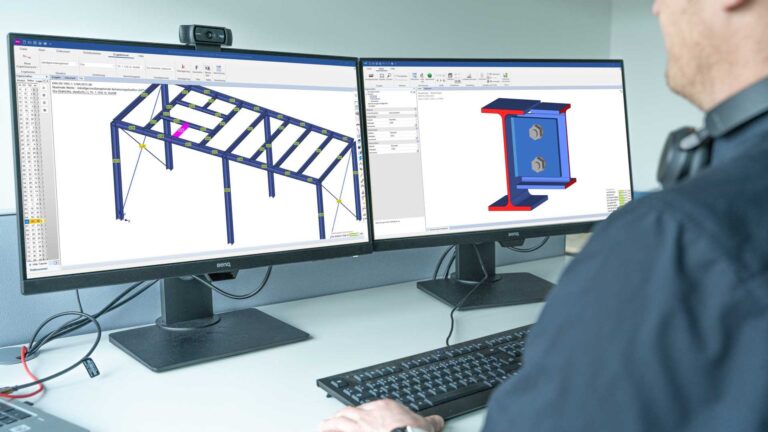
FRILO launches version 2024-2 with powerful updates for structural analysis and design
Highlights include the optimised design of Schöck Isokörbe®, the advanced integration of DC foundation engineering programs into the FRILO environment and new RSX interfaces for detail verifications in steel construction.

Load determination for eight-floor perimeter block development with FRILO Building Model
Find out how the structural engineers at bauart Konstruktions GmbH determined the loads for an eight-floor perimeter block development in Frankfurt’s Europaviertel district using the GEO from FRILO.

